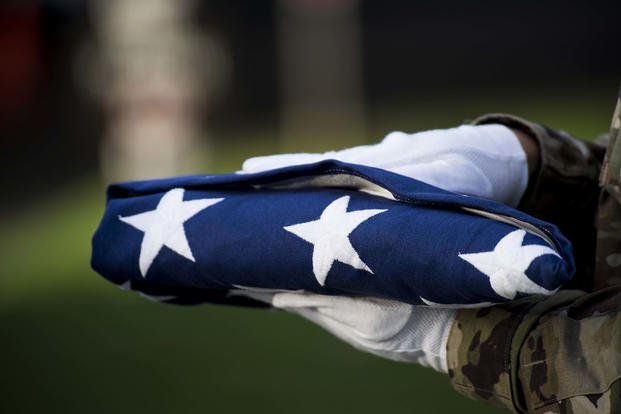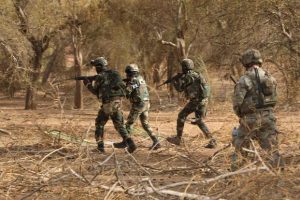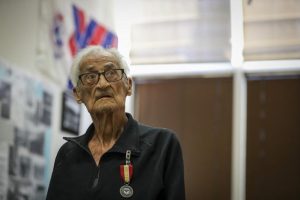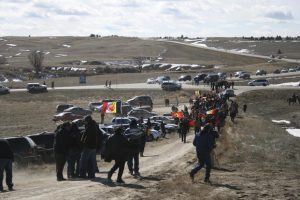A soldier with extensive family in the region went missing in action after becoming a prisoner of war during the Korean War 73 years ago.
But a relative from Lynwood donated her DNA in the hope of identifying his remains and it paid off.
Army Sgt. Cresenciano “Chano” Garcia Jr. was at last identified, bringing closure to his family who were long left to wonder about his fate.
The soldier from Laredo, Texas, died during a death march during the Korean War. He’s being returned to his family, who will have a celebration of life in Gary in September before a burial next to his parents in Texas in October.
“He was the youngest of five kids. There’s some discrepancy when he joined the army but it’s believed he was 17 years old because his dad had to sign for him,” said relative Sandy Strong from Lynwood. “About 90% of his family is here in the Region.”
Three of his sisters moved from the border town in Texas to East Chicago and his family has since fanned out across the Region. He now has family in East Chicago, Hammond, Highland, Griffith, Portage, Cedar Lake, Lake of the Four Seasons and Lynwood just across the state line in Illinois.
“That’s partly what led him to join the Army,” said Strong, who was Garcia’s niece. “It was out of spite. My mom moved to East Chicago and he wanted to move up here with her but his parents wouldn’t allow him to move away so he joined the Army.”
He enlisted while the Korean War was raging and went to basic training at Fort Lewis in Washington. Garcia was deployed to Korea with Headquarters Company, 9th Infantry Regiment, 2nd Infantry Division in 1950. He was reported missing in action during a battle by Kunu-ri in South Korea in December of that year.
He wrote regular letters to his grandmother, which the family still has and kept in sequential order. She feared something was amiss when the letters stopped coming and then grim-faced soldiers in uniform showed up on their doorstep one day with grave news.
His remains were not recovered. He was officially declared dead in February of 1951 in POW Camp 5 in the Democratic People’s Republic of Korea.
“He was in North Korea in a river by China on a death walk. One witness saw him drop on the side of the road and another saw he was too weak to carry on. They had visual confirmation when he fell dead on the side of the road.”
He died a corporal and was posthumously promoted to sergeant.
Strong was in Washington D.C. on union business for the United Steelworkers union back in 2006 with Garcia’s sister and mother. They decided to donate their DNA for a potential match even though they thought there was a slim to none chance he would ever be identified.
“Flash forward to this year and we were told it was a 99.9% DNA match and they had found his remains,” she said. “They had a whole slideshow. It looked like an NCIS-type thing. It was an amazing miracle. They found 90% of his body, including his skull, femur and jawbone. We broke down crying at the Army riding to see the skeletal remains laid out in the photos. It brings it full circle. I’ve heard his name over the years and never had the chance to meet him but this brought him to life. I’m glad my blood gave closure to the family. When he was buried DNA wasn’t available.”
He died young. He never got the chance to marry or have children.
But his memory lives on in the family.
Strong still has three Mexican coins Garcia obtained as a souvenir on a trip across the border and gave to a friend before he deployed to war. The friend held onto them after learning of Garcia’s death and eventually gave them to the family.
Garcia was presumed missing but turned out to have actually been buried anonymously on U.S. soil for well over a half-century.
North Korea and the United States reached an agreement to exchange war dead in 1954. Garcia’s remains were sent to the United States but were never identified.
He was buried as an unknown at the National Memorial Cemetery of the Pacific, colloquially known as the Punchbowl, in Hawaii in 1956.
“Since the 1980s the Army has been working to identify all the remains they found in the Punchbowl,” she said “They’ve got boxes of bones with numbers.”
His remains were exhumed in 2019 for more testing. A historian and forensic anthropologist determined the remains might be Garcia so they were sent to a Defense POW/MIA Accounting Agency Laboratory for dental, anthropological and mitochondrial DNA analysis.
A rosette will be placed by his name at the Courts of the Missing at the Punchbowl in Honolulu. A celebration of life will take place from noon until 6 p.m. on Saturday, Sept. 16 at the United Steelworkers Union’s McBridge Hall at 1301 Texas St. in Gary. At least 500 people are expected to turn out.
“It’s a ceremony for family members who can’t get down to Laredo. The military will be putting on services when he gets to his final resting place,” said relative Joe Perez, a union leader for the International Longshoremen Association at the Port of Indiana-Burns Harbor. “I’ve heard a lot of stories about him, that he was a very handsome, very honorable and very prideful man. It’s a great feeling to have some closure. My aunt donated her DNA to the military database and gave us an opportunity to get some closure.”
The public is welcome to attend the ceremony, which will include taps and a 21-gun salute from a local Veterans of Foreign Wars chapter.
He will be buried in Laredo, Texas, on Oct. 14.
His nephew Rolando Vera said the family was given the choice of leaving him in the Punchbowl, having him buried at Arlington National Cemetery or having him buried at any military post in the country. They opted to bury him with his parents in his hometown.
Vera, who lives in Laredo, remembers going with his mother frequently to a monument downtown for the Korean MIA/POW. He was so young he didn’t initially grasp the concept.
“Everybody was holding out hope at some point he would be located,” he said. “My mother, his sister, read a newspaper article in the local paper in the 1970s about POW/MIAs who survived by somehow blending in with the natives. It’s been a long road for the last 73 years. But he’s finally getting a military funeral.”
After a suburban Houston newspaper article suggested it, Vera is looking into getting a local school in Texas named after Garcia. Laredo is in the process of building four elementary schools to try to keep up with population growth there.
“The article said he would be somebody deserving of having a school named after him and he was a true hero,” he said. “It’s been an amazing journey and there’s been quite a bit of interest. I’m just blown away by all the interest being shown by people who didn’t know him but admired him for being patriotic.”
Strong hopes that by sharing her story more people related to POW/MIAs will consider donating their DNA in the hope of finding a match.
“I’ve been asked to consider going to conventions to share my story,” she said. “It’s been so moving, the miracle of it. We thought there was no chance of identifying him but you never know. There are thousands who still need to be identified. More people giving their blood would probably help.”
(c) 2023 The Times (Munster, Ind.)
© Copyright 2023 The Times, Munster, Ind.. All rights reserved.
Please rate this CIBA article
Vote






